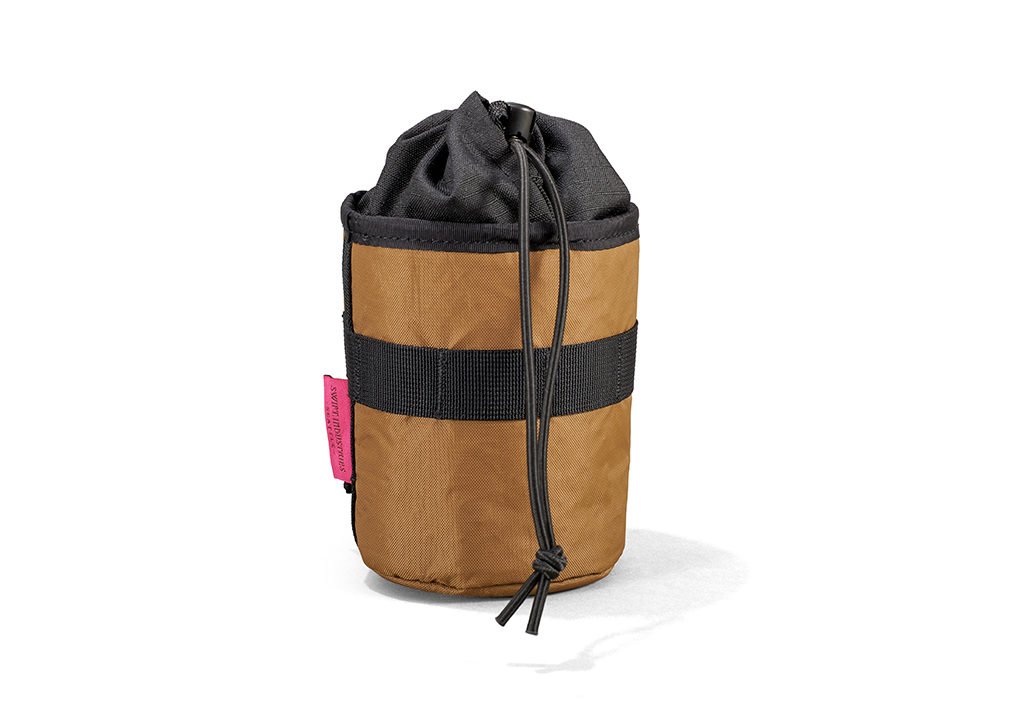Swift Industries Kestrel Handlebar Bag Review
by Ben Zuehlsdorf
After spending time with gear or components in real-life situations I often like to look at how the brand describes the product to see if the Marketing gurus hit the mark or were perhaps a bit aspirational with their description. When it comes to the Swift Industries Kestrel Handlebar Bag I’ve been using for months now, here is how Swift describes it:
The Kestrel Handlebar Bag is the perfect cockpit setup for adventurous day trips on pavement, gravel, or dirt! Why the accolades? It’s easy to attach to the bicycle, features interior and exterior zip pockets, is the ideal size, and is MOLLE compatible.
Re-reading their language used I must say I agree with all their points. Why you may ask? Well, let’s break it down:
It is definitely easy to attach to your handlebars and head tube. Thankfully they provide Voile nano straps so there is no need to switch out cheap velcro straps many other similar bags come with. Similarly, the lower attachment point to the head tube is a shock (i.e., bungy) cord which provides the perfect tension at all times when cinched up properly.
The three pocket setup is ideal in my opinion for a bag of this size. One main pocket opens up to the majority of the two liters of storage capacity. I personally like having a large dump pocket where I can get to everything easily. This storage area is big enough to replace all three jersey pockets. My daily ride items for this pocket include a One Up EDC pump, a Gravelstoke x Orucase Explore Wallet, tools, repair kit, food, and an extra layer or gloves / Buff.
Inside of the main storage area is a smaller zippered pocket to keep things organized. Here is where I keep a spare derailleur hanger, spare charged battery for my rear mech, and a chain gap alignment tool. Finally, the front of the bag has a zippered pocket as well. Here I like to keep smaller, flatter items. Like chapstick, a tire boot, a sunglasses wipe, some cash, etc.
The Kestrel Handlebar Bag is the ideal size for daily rides and longer efforts when multiple extra layers are not needed. Also, unlike burrito-style bags which often sit more outfront the Kestrel sits down closer to the headtube. This is critical I believe as the handling remains less affected when loaded up.
What does being MOLLE compatible mean? It simply means there are two rows of attachment points on the back of the bag to quickly and easily snap on up to two accessory bags. Swift offers both a Sidekick Stem Pouch and a Rando Pocket that are MOLLE compatible. I have tested both of these as well and really like the Sidekick Stem Pouch. In my experience I found the Rando Pocket a little challenging to operate one-handed, and I didn’t find that it offered me any additional advantages over the Stem Pouch. Therefore, I would choose two Sidekick Stem Pouches if I wanted to take full advantage of the MOLLE compatibility of the Kestrel Handlebar Bag.
It’s not all cupcakes and unicorns though when it comes to the Kestrel Handlebar Bag and related MOLLE accessories. The most glaring downside is the price of each bag or accessory. At time of this writing the Kestrel Handlebar Bag is $136, the Sidekick Stem Pouch is $57, and the Rando Pocket is $54. Is there enough value in return at these prices? I would say yes for the Kestrel Handlebar Bag and the Sidekick Stem Pouch. I use the Kestrel now for nearly every ride rotating it between both gravel bikes I currently own and it has replaced the three other handlebar bags I once used as well. The Kestrel is made in Indonesia and is available in Coyote, Black and Teal.
Learn more at builtbyswift.com

















The new Outtro shirt from SPC/LST. A first look and favorite features.